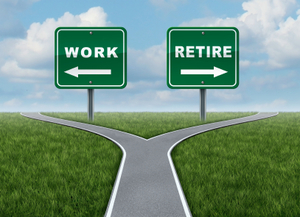Is This the End of Retirement?
As the average lifespan in the U.S. grows longer the whole concept of retirement is changing.
There are about 1 million people in the U.S. who are older than 100 years and thanks to extensive progress in biotechnology and neurosciences, many in the next generation are expected to live past the age of 150.
“The face of aging in the United States is changing dramatically. People are living longer, achieving higher levels of education, living in poverty less often, and experiencing increasingly lower rates of disability. Life expectancy nearly doubled during the 20th century with a ten-fold increase in the number of Americans age 65 or older,” according to the National Institute on Aging (NIA).
What this means is that the traditional way of planning for retirement will change radically. No longer will we follow the path of going to school, getting a job, working for a number of years, and retiring. Instead, we might go to school, get a job, take a few years off, go back to school, get another job (in a different profession) and then finally retire or work part time.
To some extent, this is already happening. More and more Americans are foregoing retirement to find a new job at 65. This is partly driven out of need for income to supplement social security but also because people who live longer don’t want to spend years and years sitting on the front porch.
Clearly, this new perspective calls for a different kind of planning. A big part of that planning involves understanding how the workplace will change in the near future. According to the Gartner Group consultancy, 20 years from now about 50 percent of all existing jobs will be done by robots instead of humans. Artificial intelligence and robots are not just challenging blue-collar jobs; they are starting to take over white-collar professions as well. Complex skillsets like those of anesthesiologists and accountants will soon be replaced by robots, simply through ongoing advances in technology.
What this means, is that people will work new and different kinds of jobs with different skillsets. In order to accomplish this, those individuals will be headed back to school to prepare for these new jobs.
In fact, life-long learning could eventually replace the school-job cycle. Older adults are heading back to school, often part time or in the evenings and their rate of enrollment is rising faster than students of typical college age. In 2014, older students accounted for about 30 percent of all college and graduate students, according to the National Center for Education Statistics. This figure is expected to rise sharply by 2020 as more than 10 million older students head for the classrooms. A large number of these students are trying to acquire the skills necessary to land a new job.
Obviously as people continue to work after retirement age and well into their 90s, their retirement income strategy and savings goals will have to be very different. People may no longer need to accumulate vast retirement savings to remain comfortable in old age. Few, as it is, can even save enough to fund a retirement that needs to last 35+ years. This new career will be combined with a more flexible working schedule, enabling you to phase gradually into full retirement.
The phased approach will permit older workers to set goals for saving and investing, bearing in mind that they will have far more time to do this than before. All of this means that retirement planning will be even more complex as all these new scenarios become a part of life. Planning as early as possible with a skilled financial advisor is the best way to help you take all this into account as you plan for the future.

